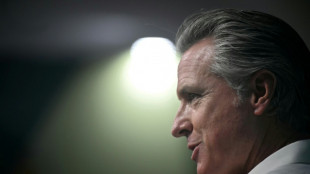
-
 Arrival of US aircraft carrier fuels Venezuelan fears of attack
Arrival of US aircraft carrier fuels Venezuelan fears of attack
-
Iraqi voters turn out in numbers as region watches on

-
 Pakistan upstage Sri Lanka in first ODI as Agha and Rauf shine
Pakistan upstage Sri Lanka in first ODI as Agha and Rauf shine
-
Macron warns any planned West Bank annexation a 'red line'

-
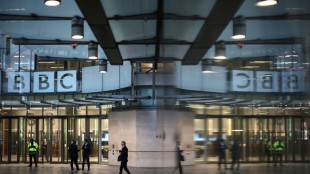 BBC must fight, says outgoing chief as Trump threatens to sue
BBC must fight, says outgoing chief as Trump threatens to sue
-
UN aid chief hails talks with Sudan army leader

-
 Mellon Blue diamond sells for $25.6 million
Mellon Blue diamond sells for $25.6 million
-
Google unveils $6.4 bn investment in Germany

-
 US aircraft carrier in Latin America fuels Venezuelan fears of attack
US aircraft carrier in Latin America fuels Venezuelan fears of attack
-
For many Syrians, Sharaa's US visit marks new beginning

-
 Monumental art displayed in shade of Egypt's pyramids
Monumental art displayed in shade of Egypt's pyramids
-
Stocks mixed as tech titans struggle

-
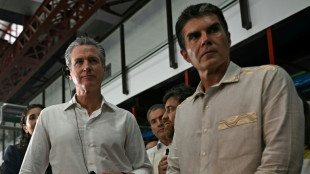 California governor Newsom slams Trump at COP30
California governor Newsom slams Trump at COP30
-
Alcaraz fights back to beat Fritz at ATP Finals

-
 Russia offers US nuclear talks in bid to ease tensions
Russia offers US nuclear talks in bid to ease tensions
-
Turkey seeks more than 2,000 years behind bars for Erdogan rival
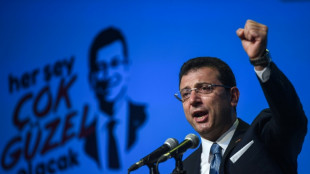
-
 UK court jails Chinese bitcoin fraudster for over 11 years
UK court jails Chinese bitcoin fraudster for over 11 years
-
Fanfare as Guinea launches enormous Simandou iron ore mine
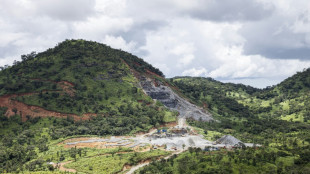
-
 Iraqis vote in general election at crucial regional moment
Iraqis vote in general election at crucial regional moment
-
Shock follows carnage after suicide bombing in Islamabad

-
 Ford returns to pull England strings against All Blacks
Ford returns to pull England strings against All Blacks
-
Stocks mixed as end to US shutdown appears closer
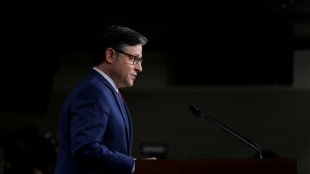
-
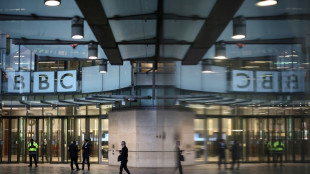 BBC must 'fight' for its journalism, outgoing chief says amid Trump lawsuit threat
BBC must 'fight' for its journalism, outgoing chief says amid Trump lawsuit threat
-
Atalanta turn to Palladino after Juric sacking

-
 'Sayyid says': Influential Shiite cleric's supporters boycott Iraq vote
'Sayyid says': Influential Shiite cleric's supporters boycott Iraq vote
-
'It's un-British': lawmakers raise concerns about aquarium penguins

-
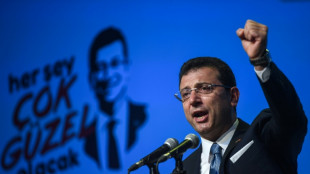 Prosecutor files 142 charges against Istanbul mayor, a top Erdogan critic
Prosecutor files 142 charges against Istanbul mayor, a top Erdogan critic
-
Agha hundred lifts Pakistan to 299-5 in 1st Sri Lanka ODI

-
 German court rules against OpenAI in copyright case
German court rules against OpenAI in copyright case
-
Calls for 'mano dura' as crime-rattled Chile votes for president

-
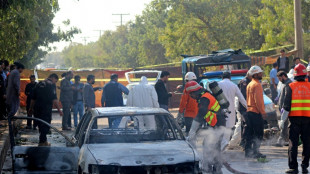 Pakistani Taliban claim deadly suicide attack in Islamabad
Pakistani Taliban claim deadly suicide attack in Islamabad
-
BBC grapples with response to Trump legal threat

-
 Cristiano Ronaldo says 2026 World Cup 'definitely' his last
Cristiano Ronaldo says 2026 World Cup 'definitely' his last
-
Trump says 'we've had a lot of problems' with France

-
 Stocks mostly rise as end to US shutdown appears closer
Stocks mostly rise as end to US shutdown appears closer
-
'Splinternets' threat to be avoided, says web address controller

-
 Yamal released from World Cup qualifiers by 'upset' Spanish federation
Yamal released from World Cup qualifiers by 'upset' Spanish federation
-
China's 'Singles Day' shopping fest loses its shine for weary consumers
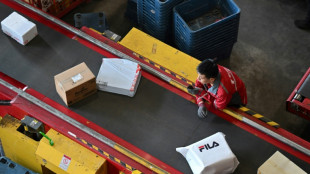
-
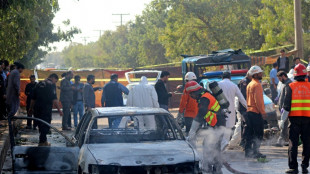 Suicide bombing in Islamabad kills 12, wounds 27
Suicide bombing in Islamabad kills 12, wounds 27
-
Philippines digs out from Typhoon Fung-wong as death toll climbs

-
 Iraqis vote in general election at a crucial regional moment
Iraqis vote in general election at a crucial regional moment
-
Asian stocks wobble as US shutdown rally loses steam
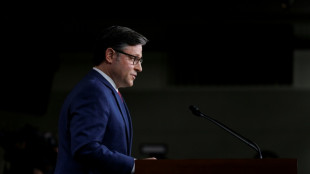
-
 UK unemployment jumps to 5% before key govt budget
UK unemployment jumps to 5% before key govt budget
-
Japanese 'Ran' actor Tatsuya Nakadai dies at 92

-
 AI stock boom delivers bumper quarter for Japan's SoftBank
AI stock boom delivers bumper quarter for Japan's SoftBank
-
Asian stocks struggle as US shutdown rally loses steam

-
 India probes deadly Delhi blast, vows those responsible will face justice
India probes deadly Delhi blast, vows those responsible will face justice
-
Pistons win streak hits seven on night of NBA thrillers

-
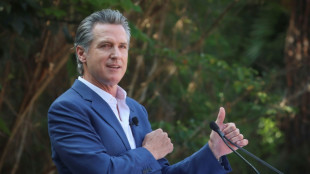 US state leaders take stage at UN climate summit -- without Trump
US state leaders take stage at UN climate summit -- without Trump
-
Burger King to enter China joint venture, plans to double stores


Three positive climate developments
While humanity's efforts to curb planet-warming emissions are nowhere near enough to avoid heating the world to catastrophic levels, tentative improvements show that progress is possible.
The climate trajectory, while still poor, has improved since countries signed the Paris Agreement in 2015 and committed to limiting the global temperature rise to "well below" two degrees Celsius above pre-industrial levels, preferably a safer 1.5C.
And the uptake of renewable energy is providing a rare glimmer of hope.
- Heating -
When the Paris Agreement was adopted, the global reliance on fossil fuels -- oil, gas and coal -- placed the world on a path towards a 3.5C rise in temperature by 2100 compared to the pre-industrial era, the International Energy Agency (IEA) said at the time.
Warming of that scale would prompt catastrophic climate disasters worldwide, including the risk of mass extinctions, the melting of glaciers and permafrost that could eventually unleash metres of sea level rise and unliveable conditions across much of the planet.
Eight years on, country commitments to reduce their carbon footprints have pulled that down slightly, putting the world on a path for a still-disastrous 2.5C to 2.9C by the end of the century, according to the UN's Environment Programme this month.
Every tenth of a degree of warming compounds the negative impacts on the climate, but the modest temperature reduction "reflects progress made in the transition to a lower emissions energy system since 2015", said the IEA.
But it "still falls far short of what is needed", the agency added.
- Peak emissions -
Annual greenhouse gas emissions responsible for climate change have risen roughly nine percent since COP21, according to UN data.
That increase led to record-breaking concentrations of CO2, methane (CH4) and nitrous oxide (N2O) in the atmosphere in 2022, the World Meteorological Organization said last week.
But the rate of the increase has slowed significantly.
The climate experts of the UN Intergovernmental Panel on Climate Change (IPCC) have projected that to meet the Paris goals, emissions need to peak by 2025.
To limit temperature rise to 1.5C emissions need to be slashed almost in half by 2030.
Recent estimates by the Climate Analytics institute find global emissions could peak by 2024 or even as early as this year.
The IEA in its pre-Paris deal assessment predicted that carbon dioxide emissions tied to the energy sector -- responsible for more than 80 percent of CO2 emitted by human activity -- could reach 43 gigatonnes (Gt) in 2030.
But the agency now says that current efforts mean that figure will be 35Gt by 2030.
That difference was "equal to the current combined energy sector emissions of the United States and European Union", it said.
- Rising renewables -
Three technologies -- solar, wind and electric vehicles -- are largely behind the improved global warming estimates since 2015.
"Solar PV is projected to reduce emissions by around three Gt in 2030," the OCED now estimates, "roughly equivalent to the emissions from all the world's cars on the road today."
Wind power is expected to reduce emissions by two gigatonnes in 2030 and electric vehicles (EVs) by around one gigatonne, compared to pre-Paris Agreement scenarios.
Photovoltaics (PVs) and wind power are expected to represent around 15 percent of global electricity production in 2030 - seven times the wind power and three times the PVs that the IEA predicted in 2015.
At the time, fleets of electric vehicles seemed a pipedream. The IEA anticipated that EVs would account for less than two percent of car sales by 2030.
It now estimates that more than a third will be purchases of electric vehicles by the end of the decade.
And the numbers are accelerating. "Clean energy technology adoption surged at an unprecedented pace over the last two years," said the IEA, noting a 50-percent increase in solar PV capacity and a 240-percent rise in EV sales.
The IEA attributes the progress -- unthinkable before the Paris Agreement -- to declining costs and public policy initiatives from China, the United States and Europe among others.
Five-year plans in China have raised ambitions for solar power and driven down global costs.
Off-shore wind projects in Europe "kick-started a global industry" and electric two-wheelers and buses "have seen significant uptake in India and other emerging markets", said the agency.
S.F.Warren--AMWN
